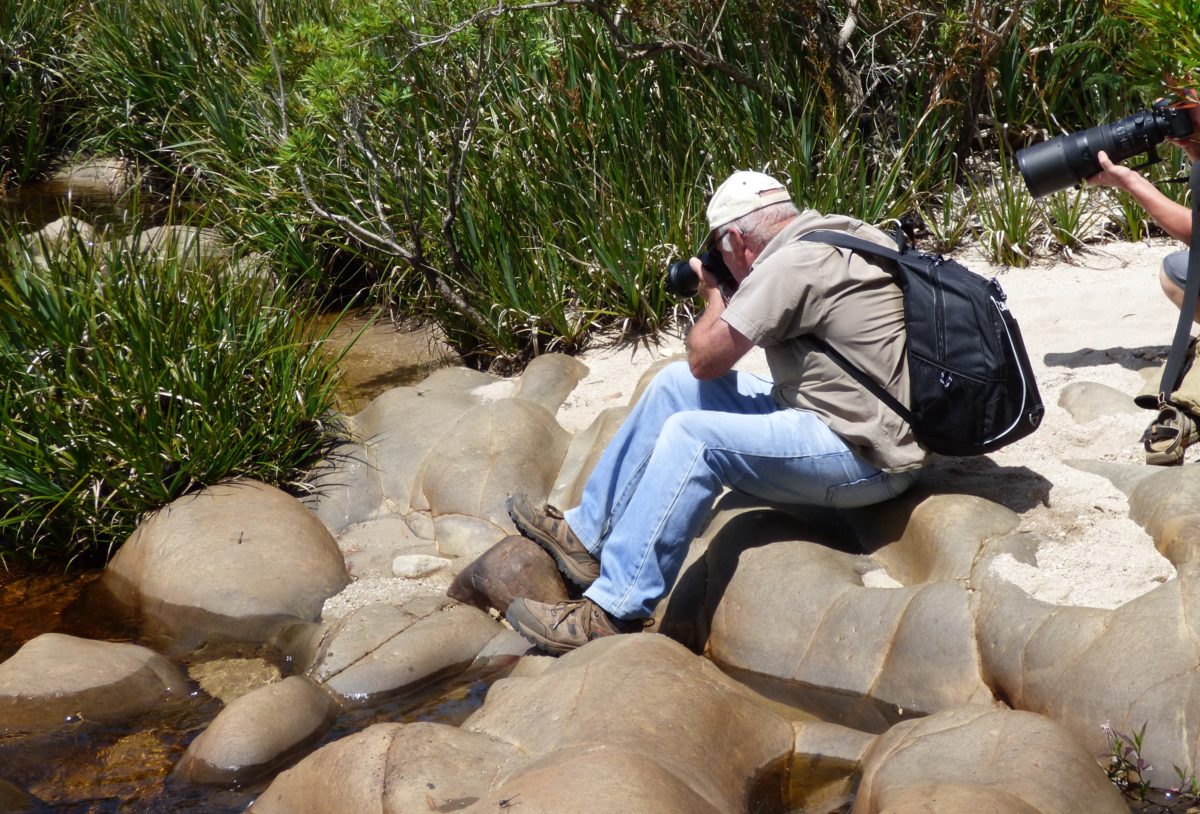SEATTLE, Washington – February 9, 2017 – JRS Biodiversity Foundation is proud to announce a grant of $215,900 to the University of Cape Town (UCT) to develop an atlas of dragonflies and damselflies of South Africa, as a contribution to the foundation’s program on Freshwater Biodiversity and Services.
Dragonflies and damselflies are not only some of the most stunning and captivating insects of the world, they are also superb indicators of the quality of freshwater resources, because they depend on clean, reliable water bodies to complete their life cycle. Species of these two groups, together known as Odonata, are therefore signposts pointing to healthy freshwater habitats. There are many species of Odonata in South Africa, some discovered only recently, and each varies in how tolerant it is to pollution, or human disturbance. As indicator species, the presence of specific dragonfly and damselfly species could stand as a proxy for ecosystem health. First, however, a baseline of the distribution and seasonality of Odonata is needed. Without knowing where and when Odonata are typically found, it is impossible to assess changes in their populations, and therefore changes in their freshwater habitats, due to development or climate change.
A team at UCT, led by Dr. Les Underhill, Director of the Animal Demography Unit (ADU), aims to fill that gap by completing the comprehensive atlas of Odonata in South Africa. To help collect the thousands of records that are needed to build this resource, ADU engages volunteers to ‘Shoot the Dragons’. A vibrant community of enthusiastic citizens is the eyes of the project, contributing photo observations with date and location information that are translated into maps, from which freshwater habitat assessments and critical areas can be identified.
JRS believes that elevating the value of biodiversity data will increase demand for its use by decision makers; and when they have greater access to biodiversity data that is high quality, relevant, easily-accessible, and timely, they will fight to preserve biodiversity by making informed decisions about conservation and sustainable development. This project at UCT relies upon the results of a previous JRS-funded effort to develop a Dragonfly Biodiversity Index and to identify African Odonata species. JRS Executive Director, Don S. Doering says, “We hope the use of that prior work and this award will contribute to the use of Odonata as a practical indicator of freshwater ecosystem health.”
See “Atlas and Phenology of Dragonflies and Damselflies in South Africa”
To download press release, click here.
About the JRS Biodiversity Foundation – The mission of the JRS Biodiversity Foundation is to increase access to and use of information that will lead to greater biodiversity conservation and more sustainable development in sub-Saharan Africa. Founded in 2004, the JRS Biodiversity Foundation works to increase the capacity of the institutions and people who collect, manage, and disseminate biodiversity data and information in sub-Saharan Africa, and to connect this knowledge to stakeholders who make and influence decisions that are crucial to supporting biodiversity. The foundation has awarded more than $13.5M in grants since 2007. Visit us online at http://www.jrsbiodiversity.org
About University of Cape Town’s ADU – The Animal Demography Unit (ADU) at the University of Cape Town has as its mission of contribute to the understanding of animal populations, especially population dynamics, and thus provide input to their conservation. ADU achieves this through mass participation projects, long-term monitoring, innovative statistical modeling and population-level interpretation of results. The emphasis is on the curation, analysis, publication, and dissemination of data. Visit online at http://www.adu.uct.ac.za/
JRS Contact: Don S. Doering, Executive Director, ddoering@jrsbiodiversity.org
UCT Contact: Les Underhill, Director, Animal Demography Unit, les.underhill@uct.ac.za
# # #

